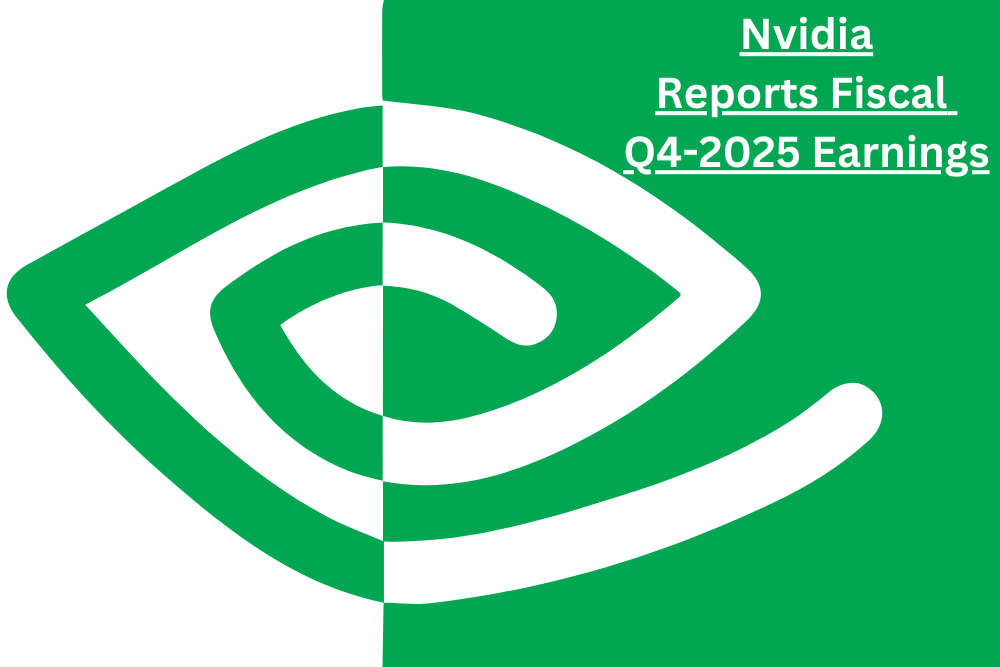Nvidia (NASDAQ:NVDA) Beats Fiscal Q4-2025 Earnings Expectations
NVIDIA (NASDAQ: NVDA), the AI and graphics chip leader, delivered another record-breaking quarter, with Q4 2025 revenue reaching $39.3 billion, a 12% increase from Q3 and a 78% jump year-over-year. This surpassed analysts' expectations of $38.1 billion, signaling continued momentum in AI-driven computing demand.
Earnings per share (EPS) also exceeded forecasts, with non-GAAP diluted EPS at $0.89, up 10% sequentially and 71% year-over-year, beating the expected $0.845. GAAP EPS stood at $0.89, marking an 82% year-over-year increase.
Data Center Revenue Drives Growth
NVIDIA's Data Center segment continued its explosive growth, reporting a record $35.6 billion in revenue, a 16% increase from Q3 and a 93% rise year-over-year. The segment’s dominance underscores the ongoing AI acceleration, as enterprises and cloud providers ramp up investments in NVIDIA’s AI infrastructure. Here’s a chart of its Data Center revenue over the years, posted by FinChat on X.
Nvidia’s data center revenue over the years.
Source: FinChat
Other segments showed mixed results:
Gaming revenue reached $2.5 billion, down 22% from Q3 and 11% year-over-year as consumer demand normalized.
Professional Visualization generated $511 million, a 5% sequential increase and 10% year-over-year growth.
Automotive revenue hit $570 million, up 27% from Q3 and 103% from a year ago, fueled by growing adoption of AI-powered autonomous vehicle solutions.
Record Full-Year Results and Strong Profitability
For fiscal 2025, NVIDIA posted record revenue of $130.5 billion, more than doubling (+114%) from the prior year.
GAAP EPS for FY 2025 came in at $2.94, up 147% from a year ago.
Non-GAAP EPS hit $2.99, rising 130% year-over-year.
Operating income surged 147% to $81.5 billion, reflecting the company’s strong pricing power and efficiency gains. Net income skyrocketed to $72.9 billion, up 145% from last year.
Free Cash Flow and Shareholder Returns
NVIDIA continues to generate substantial cash flows, reporting $15.5 billion in free cash flow for Q4 and $60.7 billion for the full year—a staggering increase from $26.9 billion last year.
The company also announced a quarterly cash dividend of $0.01 per share, payable on April 2, 2025, to shareholders on record as of March 12, 2025.
Q1 Fiscal 2026 Outlook: Continued Momentum
For the upcoming Q1 FY26, NVIDIA expects:
Revenue of $43.0 billion, plus or minus 2%, indicating continued strength (Q4 revenue: $39.3 billion).
Gross margin of 71.0% (non-GAAP), reflecting robust pricing and operational efficiency.
Operating expenses of $3.6 billion (non-GAAP), as the company continues investing in AI and infrastructure expansion.
CEO Jensen Huang on AI Acceleration
NVIDIA's CEO, Jensen Huang, highlighted the company’s leadership in AI and the massive demand for its Blackwell AI supercomputers.
"AI is advancing at light speed as agentic AI and physical AI set the stage for the next wave of AI to revolutionize the largest industries."
NVIDIA remains at the center of the AI revolution, with major partnerships including AWS, Microsoft Azure, Google Cloud, and Oracle Cloud, all integrating NVIDIA’s GB200 AI systems to support surging AI workloads.
With record results and stronger-than-expected guidance, NVIDIA enters FY26 with strong momentum, positioning itself as the leading force in AI computing and next-generation data centers.
Valuation: What Is Nvidia Stock’s P/E Ratio Now?
In the last year, NVDA generated $2.99 in adjusted EPS. At the current share price of $131 (in after-hours trading), this gives it a P/E ratio of 43.8x.
You can use our free valuation calculators to help you determine if NVDA stock is undervalued or overvalued.
A useful one you can use is our H-model calculator, which we’ve provided for free below. And if you don’t know how to use it, a comprehensive guide can be found here.


